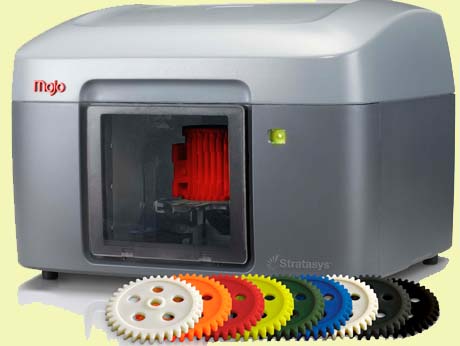
Year end tech trend: 'Printing' solid objects is moving from industry to the consumer
By Anand Parthasarathy
Bangalore, December 22 2014
As technology turning points, the Internet and the PC are old stories. The new disruptor is 3-D printing.
Which is strange, because Additive Manufacturing or AM -- the process of creating a solid object by adding successive layers of material under computer control -- is nearly 30 years old. Till recently it remained the preserve of the manufacturing industry which used 3-D printers for rapid prototyping: making samples of parts which they can tweak before releasing for bulk manufacture.
In 2014, 3-D printers saw two developments: Large professional-grade printers morphed into compact desktop models whose output was so good that it could for small quantity manufacture, replacing injection moulding, the process used for making plastic items in bulk. The second trend was a small lurch from industry to aam aadmi, with 3-D printers becoming cheaper and within the reach of cottage industries, schools, colleges and hobbyists. In 2015 we can expect 3-D printers to be widely available -- from professional models costing Rs 5 lakhs and above to home machines or kits starting as low as Rs 25,000.
On Ganesh Chathurthi this year, the Bangalore-based Altem Technologies used a 3-D printer to create Pune's famous Dagaduseth Halwai Ganapathi idol in plastic. The company is the largest player in professional 3-D printers in India: The smallest of the US-made Stratasys printers it brings to India, is the Mojo which costs around Rs 6 lakhs and can build objects up to a 5 inch cube in size. It has proved a popular machine with manufacturing as well as educational institutions in India. Altem is helping to evangelise 3-D printing in India by starting a website called PrintMyCAD.com where you can upload a Computer Aided Design (CAD) file of your 3-D object and have a sample printed out for free.
The trickle down effect has seen such technologies, scale down to fit slimmer budgets: A well known brand is the Netherlands-origin Ultimaker. The US-based Makerbot's entry level Replicator Mini which calls itself the "One touch" 3-D printer, is aimed at educational institutions and sells in India for Rs 1.3 lakh. Another popular desktop printer is Cubify's $ 1100 home printer, the Cube. You can also buy affordable printers in the RepRap series ( short for Replicating Rapid Prototyper) either assembled or in kit form sourced from China based He3D and other makers for Rs 35,000 - Rs 45,000.
Perhaps the most interesting development in 3-D printers is the opportunity seized by many Indian players to manufacture them right here: Desi models come from names like LBD Makers, Brahma3, ChipMax and KCbots.
Last week, Think3D the largest 3-D printer platform offering printers and print services in India, helped the Gachibowli, Hyderabad unit of Oakridge International School to organise a 3-D printing art exhibition, where students explained the technology to their parents by converting art work into 3-D objects.
In 2015, expect 3-D printers to be even more widely used and easily available in India. From aero-industries in Bangalore who are using these printers to replace hard-to-find aircraft parts to plastics moulders in Gujarat who use the technology to roll out rapid samples for foreign customers, to hospitals who are custom-making light-weight prosthetics for polio-affected kids, 3-D printing is creating a mini Indian revolution in manufacturing. In our day we expressed our creativity with clay and building blocks and plasticine.
Our kids will soon turn their own ideas into objects using 3-D printers... and who knows, they might be front runners of the Make in India movement.